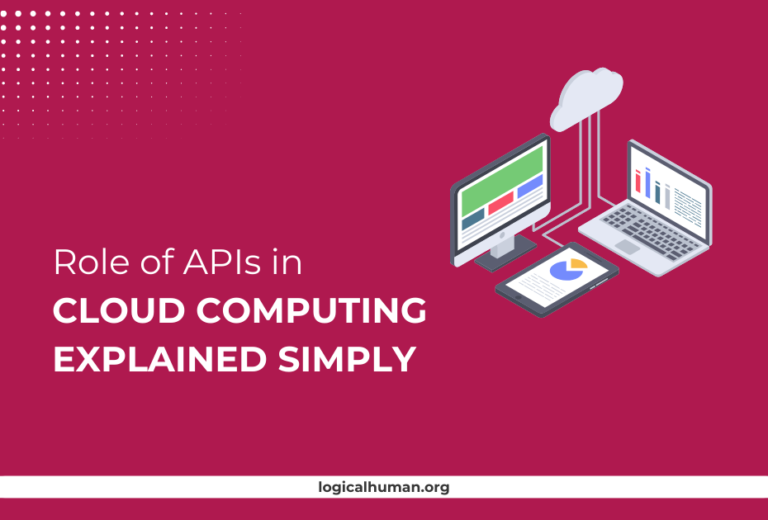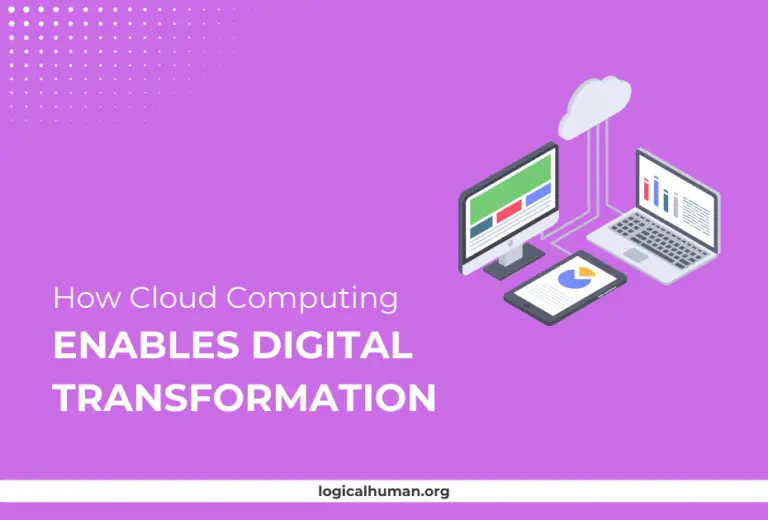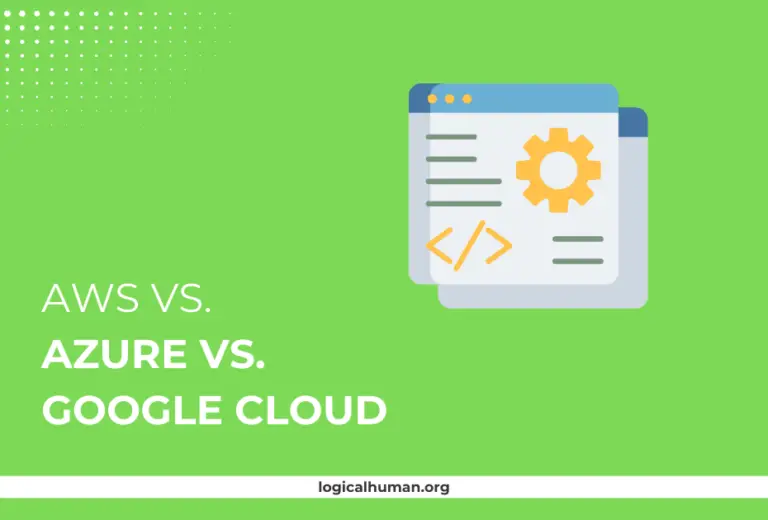Have you ever wondered how cloud computing can offer so many services with just a few clicks? The secret sauce is virtualization. Virtualization plays a pivotal role in cloud computing, transforming how resources are managed and delivered over the internet.
What is Virtualization?
Virtualization is like a magic trick for your hardware. Imagine taking a single physical machine and turning it into multiple virtual ones, each running its own operating system and applications. It allows you to create virtual versions of something, such as servers, storage devices, or even entire networks. This is a game-changer for businesses, enabling them to do more with less hardware.
The Role of Virtualization in Cloud Computing
Without virtualization, cloud computing as we know it wouldn’t exist. It’s the backbone that enables the creation, management, and delivery of cloud resources. Virtualization abstracts the hardware layer, allowing multiple operating systems and applications to run on a single physical machine. This abstraction is what enables the scalability, flexibility, and efficiency of cloud services.
| Type of Virtualization | Description | Features | Common Use Cases | Examples/Technologies |
|---|---|---|---|---|
| Server Virtualization | Creates multiple virtual servers on a single physical server. | Resource Optimization Reduced Costs Isolation of Services | Running multiple applications on a single server Server consolidation | VMware vSphere, Microsoft Hyper-V |
| Network Virtualization | Combines network resources into a single, software-based administrative entity. | Improved Network Efficiency Enhanced Security Scalable Network Management | Virtual Private Networks (VPN) Software-Defined Networking (SDN) | Cisco ACI, VMware NSX |
| Storage Virtualization | Pools physical storage devices into a single, unified storage system. | Simplified Management Enhanced Data Availability Cost Efficiency | Data Center Management Cloud Storage Solutions | NetApp ONTAP, VMware vSAN |
| Desktop Virtualization | Allows remote access to desktop environments from any device. | Remote Access Centralized Management Enhanced Security | Remote Work Solutions Virtual Desktop Infrastructure (VDI) | Citrix Virtual Apps and Desktops, VMware Horizon |
| Application Virtualization | Abstracts applications from the underlying OS, allowing them to run in isolated environments. | Simplified Deployment Reduced Conflicts Enhanced Security | Application Deployment Software Testing | Microsoft App-V, VMware ThinApp |
How Virtualization Works
Understanding how virtualization works is crucial to grasp its importance in cloud computing. It involves several layers and components, each playing a specific role in creating virtual environments.
Hypervisors Explained
The hypervisor, also known as a Virtual Machine Monitor (VMM), is the core technology behind virtualization. It allows multiple virtual machines to run on a single physical machine by managing their resources. There are two types of hypervisors:
- Type 1 Hypervisors: Also known as bare-metal hypervisors, these run directly on the physical hardware. Examples include VMware ESXi and Microsoft Hyper-V.
- Type 2 Hypervisors: These run on a host operating system, which then runs the virtual machines. Examples include Oracle VirtualBox and VMware Workstation.
Virtual Machines (VMs) and Containers
Virtual machines are like digital copies of physical computers. Each VM has its own operating system and applications, independent of the host system. Containers, on the other hand, share the host OS kernel but run isolated processes. This makes containers more lightweight and faster compared to VMs.
Types of Virtualization
Virtualization isn’t one-size-fits-all. There are several types, each serving a unique purpose in cloud computing:
- Server Virtualization: Divides a physical server into multiple virtual servers, optimizing resource use.
- Network Virtualization: Creates virtual networks on a physical network, improving scalability and flexibility.
- Storage Virtualization: Pools physical storage resources into a virtual storage unit, simplifying management and access.
- Desktop Virtualization: Allows users to access desktop environments from remote locations, enhancing mobility and security.
Benefits of Virtualization in Cloud Computing
Virtualization offers numerous advantages, making it a fundamental component of cloud computing.
Improved Resource Utilization
With virtualization, you can maximize the utilization of your hardware resources. Instead of having one server handle one task, multiple virtual servers can operate independently on a single physical server. This reduces hardware costs and energy consumption.
Cost Efficiency and Scalability
Virtualization reduces the need for physical hardware, cutting down on expenses. Plus, it’s highly scalable. Need more resources? Just create more virtual machines. This scalability is essential for businesses that experience fluctuating workloads.
Enhanced Security and Isolation
Virtualization provides an extra layer of security by isolating different virtual machines. If one VM is compromised, it doesn’t necessarily affect others. This isolation is crucial for maintaining the integrity of systems and data.
Challenges of Virtualization
Despite its benefits, virtualization comes with its own set of challenges.
Performance Overheads
Running multiple virtual machines can strain the underlying hardware, leading to performance issues. Proper resource allocation and management are crucial to avoid bottlenecks.
Complexity in Management
Managing virtual environments can be complex, especially as the number of virtual machines grows. It requires robust tools and expertise to handle the orchestration, monitoring, and maintenance of virtualized resources.
Security Risks
While virtualization enhances security through isolation, it also introduces new risks. Vulnerabilities in the hypervisor or configuration errors can expose virtual machines to attacks.
Key Virtualization Technologies
Several key players dominate the virtualization market, each offering unique features and capabilities.
VMware vSphere
VMware vSphere is a leading server virtualization platform that offers a comprehensive suite of tools for creating and managing virtual environments. It’s known for its high performance and robust security features.
Microsoft Hyper-V
Microsoft Hyper-V is a versatile virtualization platform integrated into Windows Server. It supports a wide range of operating systems and provides advanced features like live migration and dynamic memory.
KVM and Xen
KVM (Kernel-based Virtual Machine) and Xen are open-source hypervisors widely used in cloud environments. They offer flexibility and scalability, making them popular choices for public and private clouds.
Virtualization vs. Cloud Computing
Although they’re often used interchangeably, virtualization and cloud computing are not the same.
Key Differences
- Virtualization refers to the creation of virtual resources from physical hardware.
- Cloud Computing is a broader concept that delivers resources over the internet, often using virtualization as the underlying technology.
How They Complement Each Other
Virtualization enables cloud computing by abstracting physical resources, which cloud providers then deliver as services. Without virtualization, the dynamic and scalable nature of cloud computing wouldn’t be possible.
Virtualization in Cloud Service Models
Virtualization is the backbone of various cloud service models.
Infrastructure as a Service (IaaS)
IaaS provides virtualized computing resources over the internet. Users can create and manage virtual machines, networks, and storage, paying only for what they use.
Platform as a Service (PaaS)
PaaS delivers a virtualized platform for developing, testing, and deploying applications. It abstracts the underlying infrastructure, allowing developers to focus on coding.
Software as a Service (SaaS)
SaaS uses virtualization to deliver software applications over the internet. Users can access these applications from any device without worrying about installation or maintenance.
Virtualization in Public, Private, and Hybrid Clouds
Virtualization is integral to various cloud deployment models.
Virtualization in Public Cloud
In public clouds, virtualization enables resource sharing among multiple tenants. It offers cost-effective solutions with high scalability but may raise concerns about data privacy.
Virtualization in Private Cloud
Private clouds use virtualization to create a dedicated environment for a single organization. This model offers greater control and security but at a higher cost.
Virtualization in Hybrid Cloud
Hybrid clouds combine public and private clouds, using virtualization to move workloads seamlessly between environments. This flexibility makes it ideal for businesses with dynamic workloads.
Best Practices for Implementing Virtualization
To reap the full benefits of virtualization, it’s essential to follow best practices.
Resource Allocation and Management
Properly allocate CPU, memory, and storage resources to avoid overloading the physical hardware. Use tools like VMware’s Distributed Resource Scheduler (DRS) to automate resource management.
Regular Monitoring and Maintenance
Monitor the performance of virtual machines and physical hosts regularly. Use monitoring tools to track resource usage and detect issues before they affect performance.
Security Best Practices
Implement strong access controls and regularly update hypervisor software to mitigate security risks. Use virtual firewalls and network segmentation to protect virtual environments.
Future of Virtualization in Cloud Computing
The future of virtualization looks promising, with new technologies on the horizon.
Advances in Virtualization Technology
Technologies like micro-segmentation and network function virtualization (NFV) are revolutionizing how virtual environments are secured and managed. These advancements will continue to drive innovation in cloud computing.
Role of AI and Machine Learning in Virtualization
AI and machine learning are playing a growing role in virtualization, automating resource management, and optimizing performance. These technologies will make virtual environments more efficient and responsive.
Common Misconceptions About Virtualization
There are several misconceptions about virtualization that need to be addressed.
Virtualization Equals Cloud Computing
Many people think virtualization and cloud computing are the same. While virtualization is a key enabler, cloud computing encompasses a broader range of services and technologies.
Virtualization is Inherently Insecure
Some believe that virtualization introduces security vulnerabilities. While there are risks, proper management and security measures can mitigate them, making virtual environments as secure as physical ones.
Use Cases of Virtualization in Cloud Computing
Virtualization has a wide range of applications in cloud computing.
Virtualized Data Centers
Virtualization allows for the creation of virtual data centers, enabling efficient resource allocation and management. This reduces costs and improves agility.
DevOps and Testing Environments
Virtual machines and containers are ideal for creating isolated testing environments. They allow developers to test new software without affecting production systems.
Disaster Recovery
Virtualization simplifies disaster recovery by allowing entire virtual machines to be backed up and restored quickly. This ensures business continuity in case of hardware failure or data loss.
Virtualization and Containerization
While virtualization and containerization are related, they serve different purposes.
Differences Between VMs and Containers
- Virtual Machines: Include an entire operating system, making them more resource-intensive.
- Containers: Share the host OS kernel, making them lighter and faster to start.
Use Cases of Containers in Cloud Computing
Containers are ideal for microservices and cloud-native applications, providing scalability and portability across cloud environments.
Choosing the Right Virtualization Solution
Selecting the right virtualization solution depends on various factors.
Assessing Business Needs
Consider your organization’s specific needs, such as scalability, cost, and performance requirements. Different virtualization platforms offer different features and capabilities.
Comparing Cost and Performance
Evaluate the cost and performance of different virtualization solutions. Open-source options like KVM may offer cost savings, while commercial solutions like VMware provide advanced features.
Evaluating Vendor Support and Features
Consider the level of support and additional features offered by vendors. Reliable support can be crucial for troubleshooting and optimizing virtual environments.
Conclusion
Virtualization is the cornerstone of cloud computing, enabling the efficient use of resources, scalability, and flexibility. Understanding how it works, its benefits, and challenges is essential for businesses looking to leverage cloud technologies effectively. By implementing best practices and choosing the right solutions, organizations can maximize the potential of virtualization in their cloud computing strategies.
FAQs
What is the difference between virtualization and cloud computing?
Virtualization is the technology that creates virtual instances of hardware or software, while cloud computing is the delivery of these resources over the internet. Virtualization enables cloud computing by abstracting physical resources.
Why is virtualization important in cloud computing?
Virtualization allows cloud providers to offer scalable, flexible, and cost-effective services by efficiently utilizing physical hardware resources. It also enables the creation of isolated environments for different users or applications.
What are the key types of virtualization used in cloud computing?
The main types of virtualization include server virtualization, network virtualization, storage virtualization, and desktop virtualization. Each serves a unique role in optimizing resources and providing flexible computing environments.
How do virtualization and containerization differ?
Virtualization involves creating virtual machines that run complete operating systems, whereas containerization involves creating isolated environments that share the host OS kernel. Containers are more lightweight and efficient compared to virtual machines.
What are the potential security risks associated with virtualization?
Virtualization can introduce risks such as hypervisor vulnerabilities, improper configurations, and resource contention. Implementing security best practices like access controls, regular updates, and monitoring can mitigate these risks.



